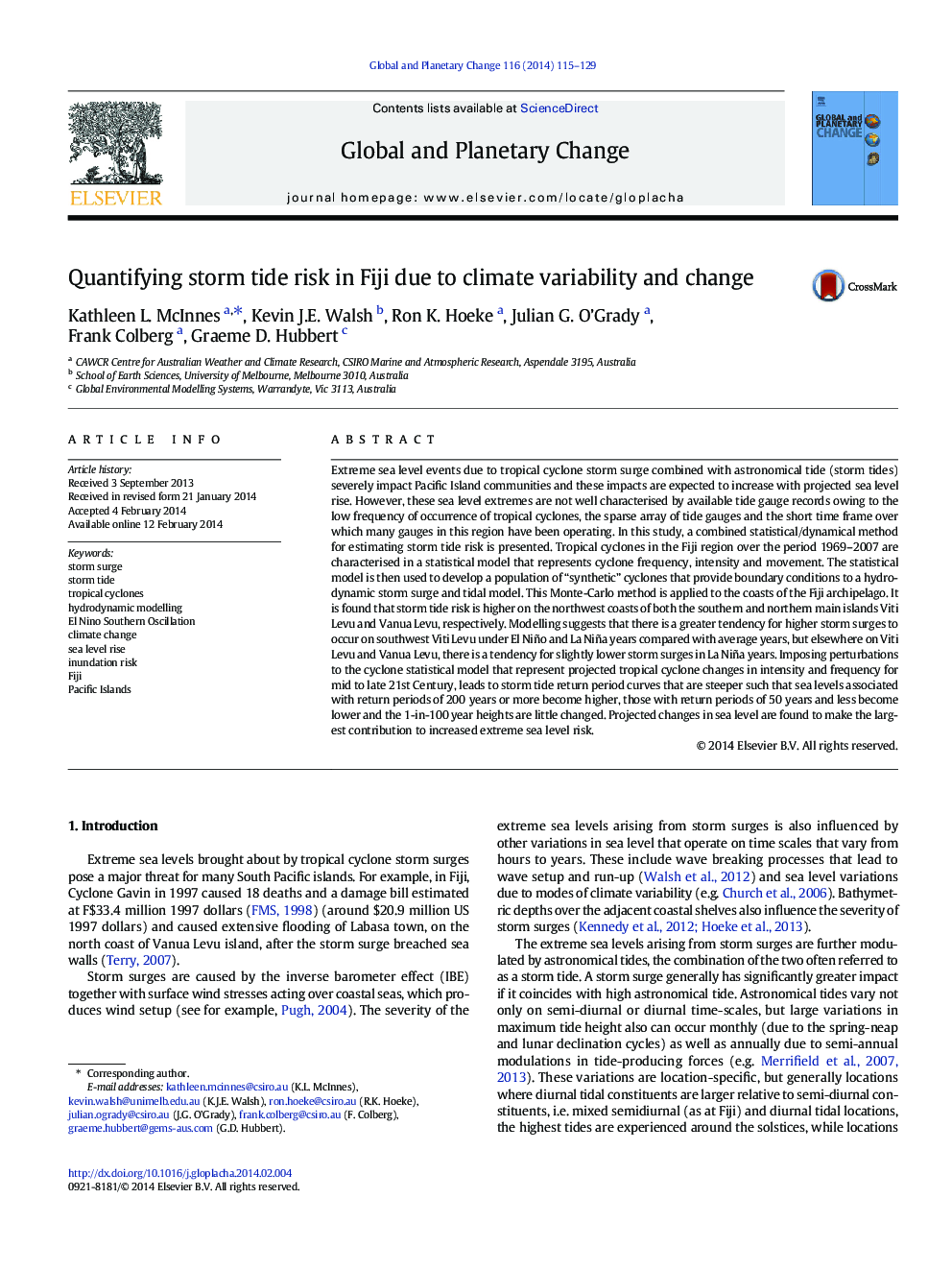| کد مقاله | کد نشریه | سال انتشار | مقاله انگلیسی | نسخه تمام متن |
|---|---|---|---|---|
| 6348241 | 1621665 | 2014 | 15 صفحه PDF | دانلود رایگان |
عنوان انگلیسی مقاله ISI
Quantifying storm tide risk in Fiji due to climate variability and change
ترجمه فارسی عنوان
به دلیل تغییرات و تغییرات اقلیمی، میزان فرسایش طوفان در فیجی کم است
دانلود مقاله + سفارش ترجمه
دانلود مقاله ISI انگلیسی
رایگان برای ایرانیان
کلمات کلیدی
موج طوفان، طوفان جزر و مد، طوفان گرمسیری، مدل سازی هیدرودینامیکی، النینو جنوبی نوسان، تغییر آب و هوا، افزایش سطح آب دریا، خطر انفجار فیجی، جزایر اقیانوس آرام،
موضوعات مرتبط
مهندسی و علوم پایه
علوم زمین و سیارات
فرآیندهای سطح زمین
چکیده انگلیسی
Extreme sea level events due to tropical cyclone storm surge combined with astronomical tide (storm tides) severely impact Pacific Island communities and these impacts are expected to increase with projected sea level rise. However, these sea level extremes are not well characterised by available tide gauge records owing to the low frequency of occurrence of tropical cyclones, the sparse array of tide gauges and the short time frame over which many gauges in this region have been operating. In this study, a combined statistical/dynamical method for estimating storm tide risk is presented. Tropical cyclones in the Fiji region over the period 1969-2007 are characterised in a statistical model that represents cyclone frequency, intensity and movement. The statistical model is then used to develop a population of “synthetic” cyclones that provide boundary conditions to a hydrodynamic storm surge and tidal model. This Monte-Carlo method is applied to the coasts of the Fiji archipelago. It is found that storm tide risk is higher on the northwest coasts of both the southern and northern main islands Viti Levu and Vanua Levu, respectively. Modelling suggests that there is a greater tendency for higher storm surges to occur on southwest Viti Levu under El Niño and La Niña years compared with average years, but elsewhere on Viti Levu and Vanua Levu, there is a tendency for slightly lower storm surges in La Niña years. Imposing perturbations to the cyclone statistical model that represent projected tropical cyclone changes in intensity and frequency for mid to late 21st Century, leads to storm tide return period curves that are steeper such that sea levels associated with return periods of 200Â years or more become higher, those with return periods of 50Â years and less become lower and the 1-in-100Â year heights are little changed. Projected changes in sea level are found to make the largest contribution to increased extreme sea level risk.
ناشر
Database: Elsevier - ScienceDirect (ساینس دایرکت)
Journal: Global and Planetary Change - Volume 116, May 2014, Pages 115-129
Journal: Global and Planetary Change - Volume 116, May 2014, Pages 115-129
نویسندگان
Kathleen L. McInnes, Kevin J.E. Walsh, Ron K. Hoeke, Julian G. O'Grady, Frank Colberg, Graeme D. Hubbert,
